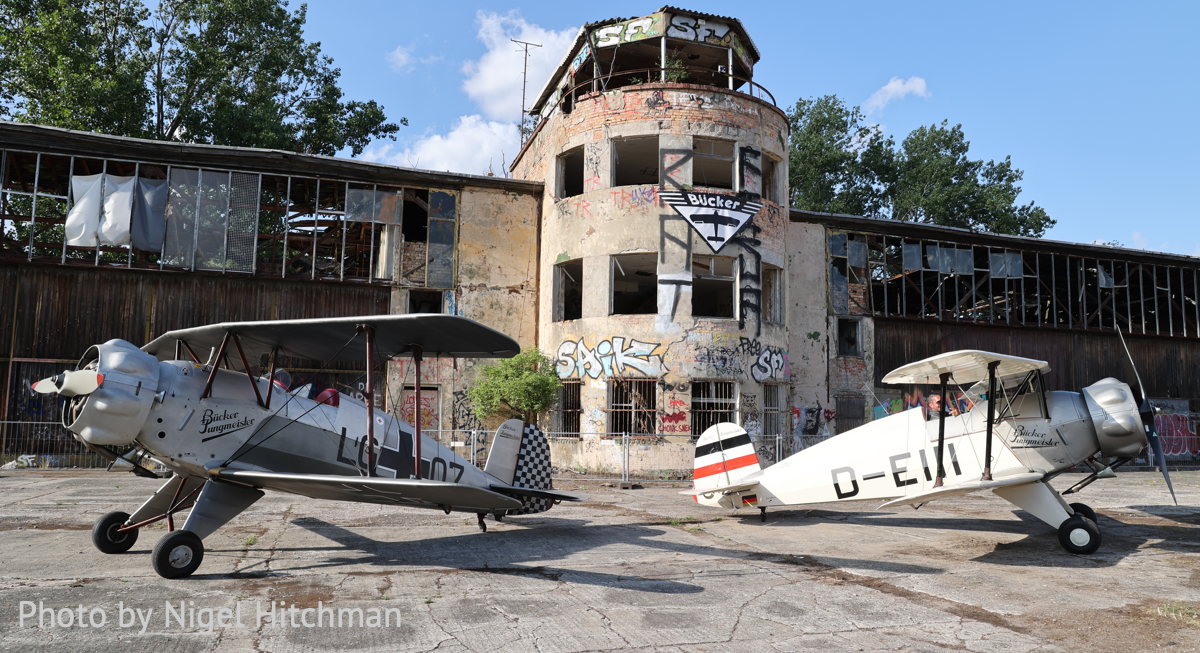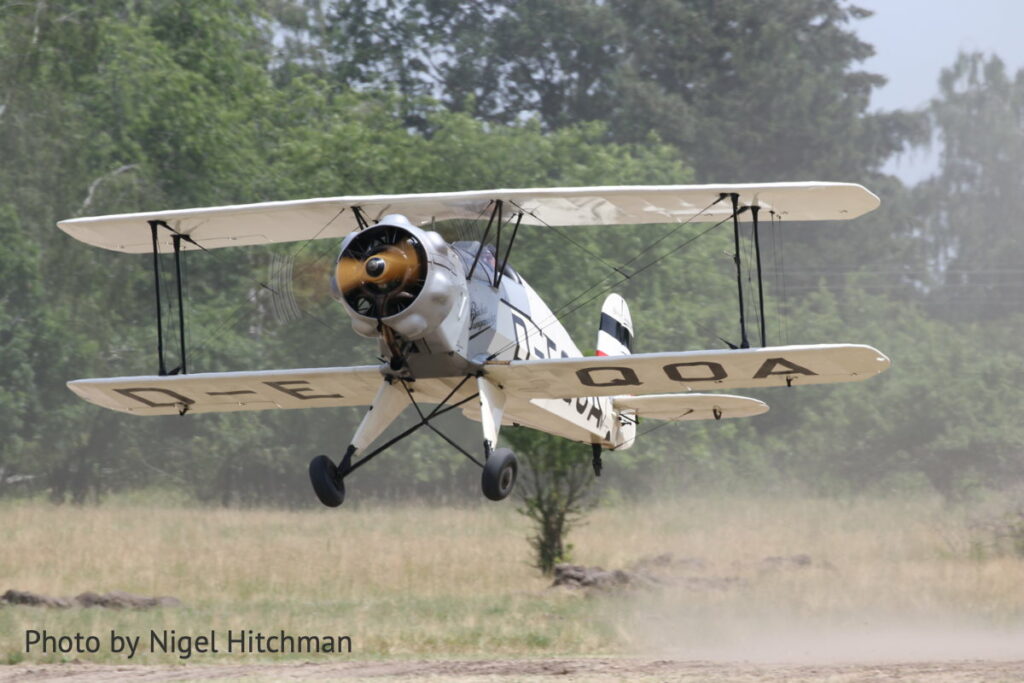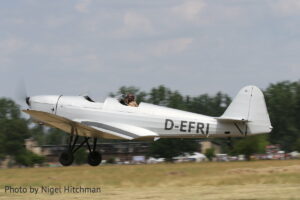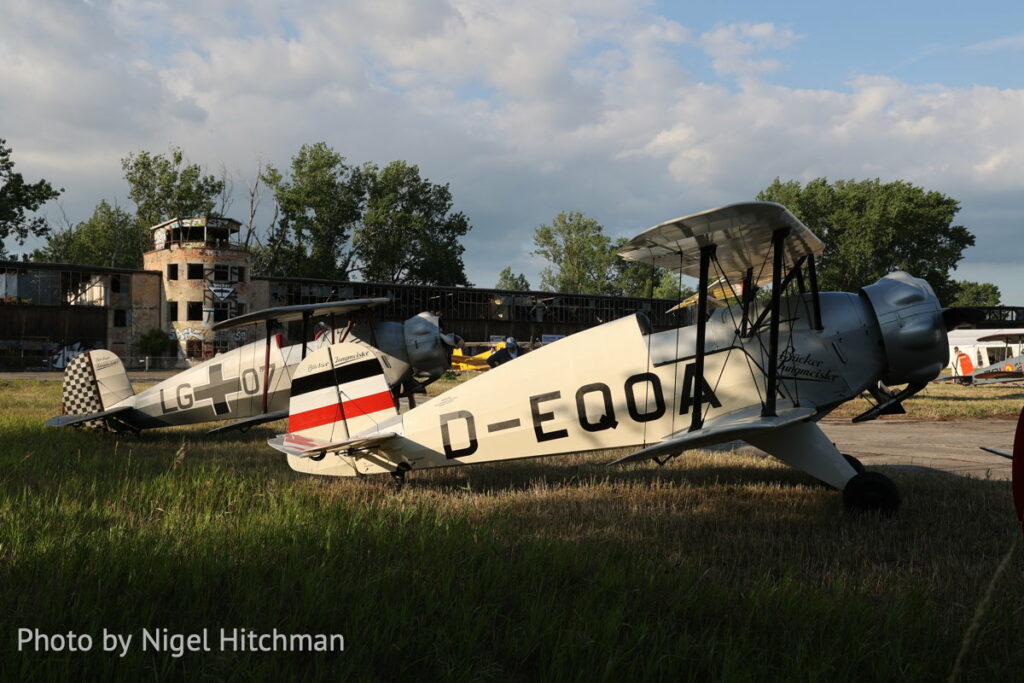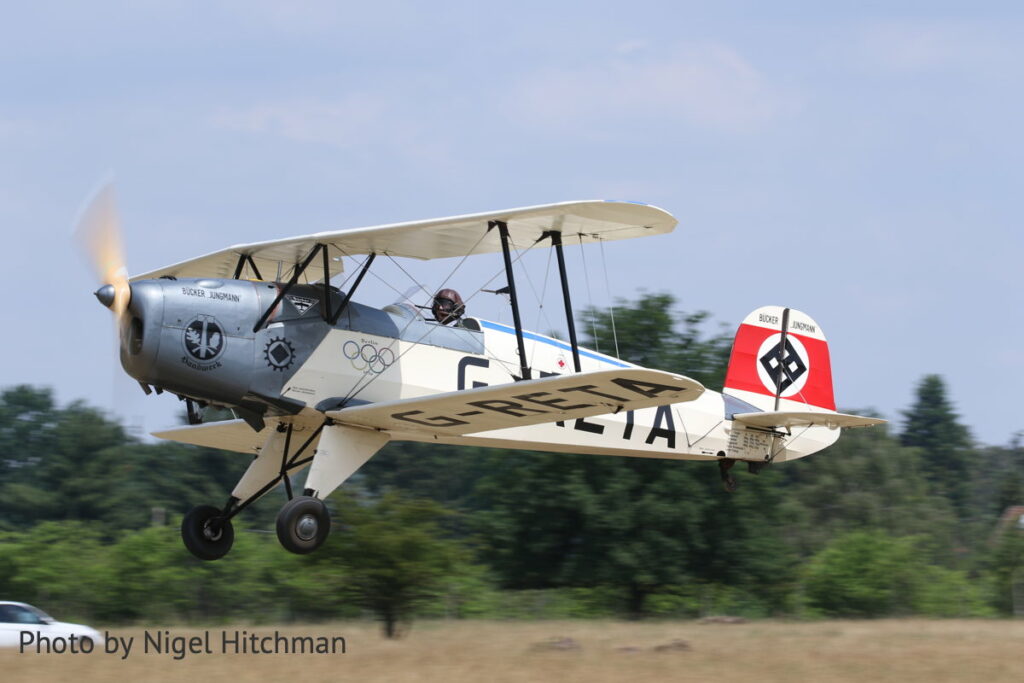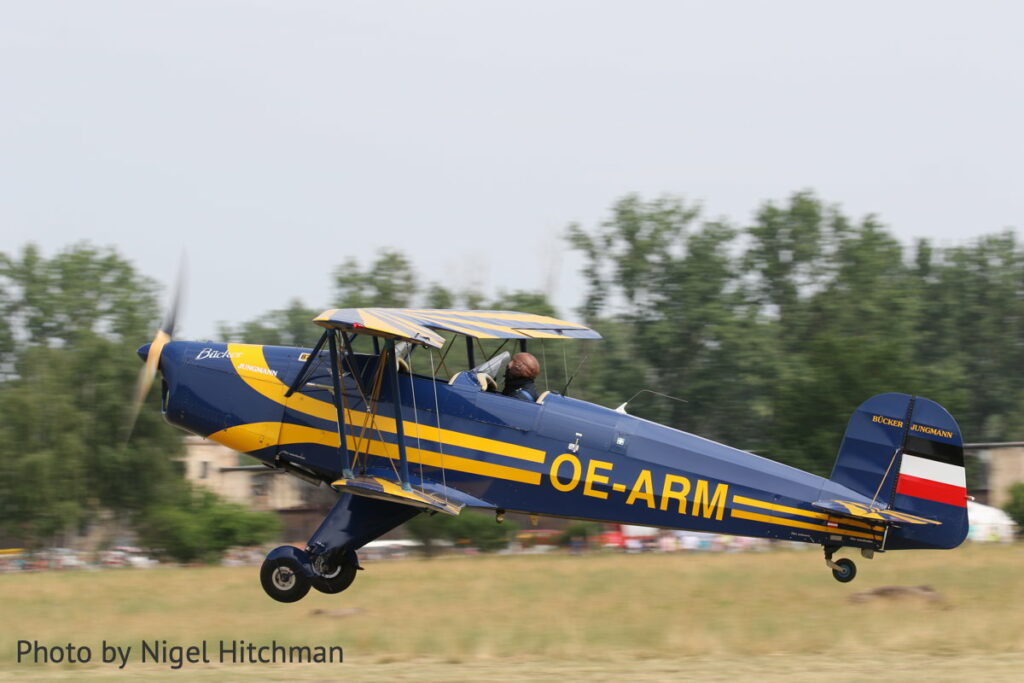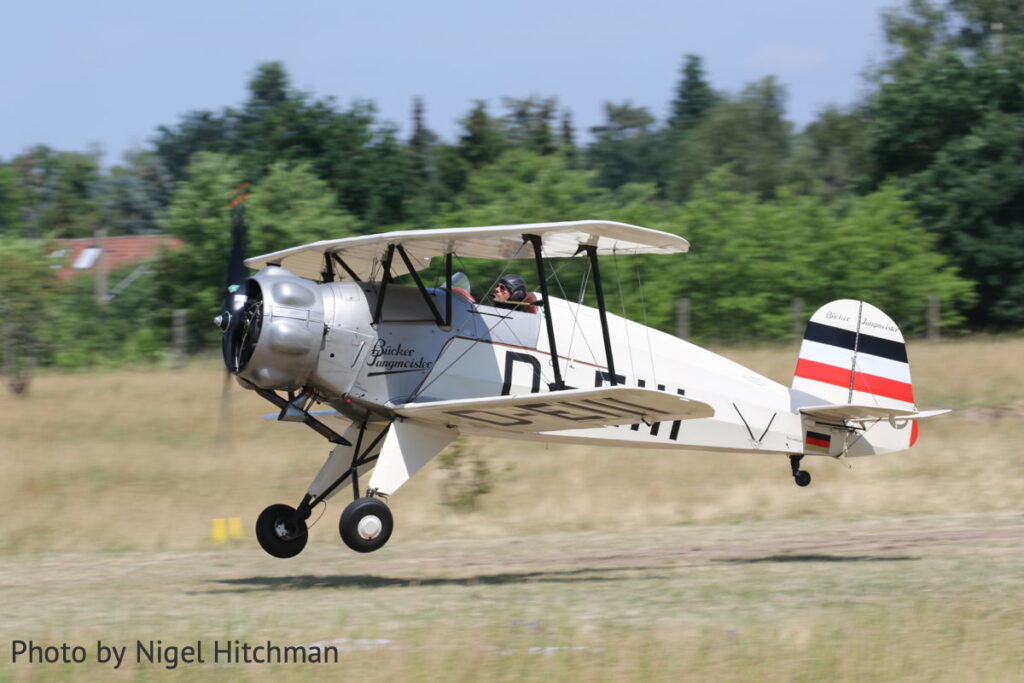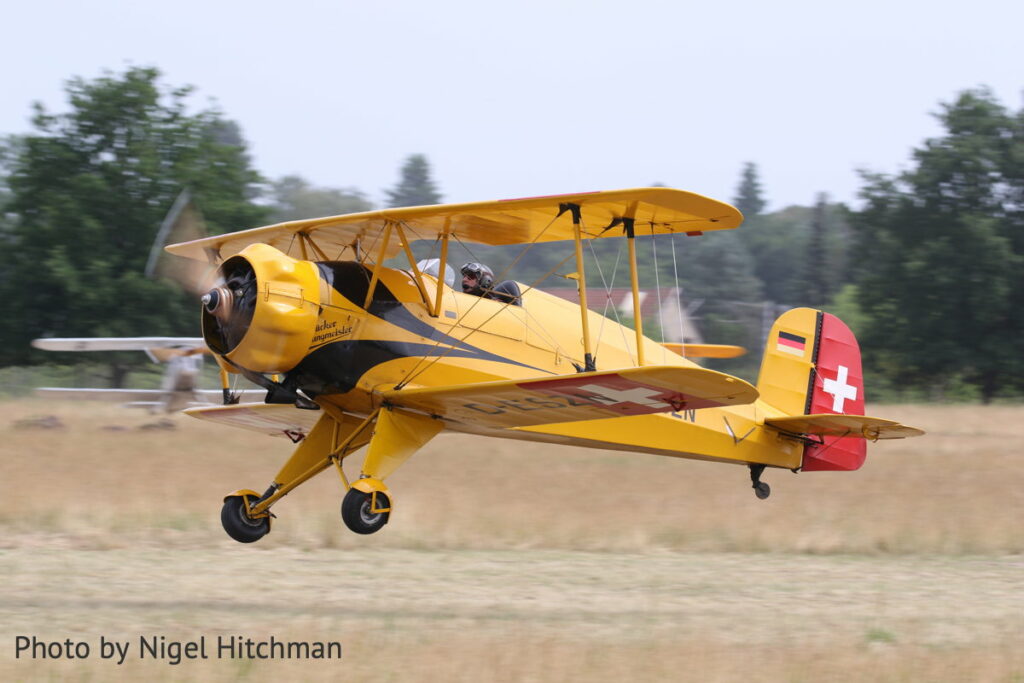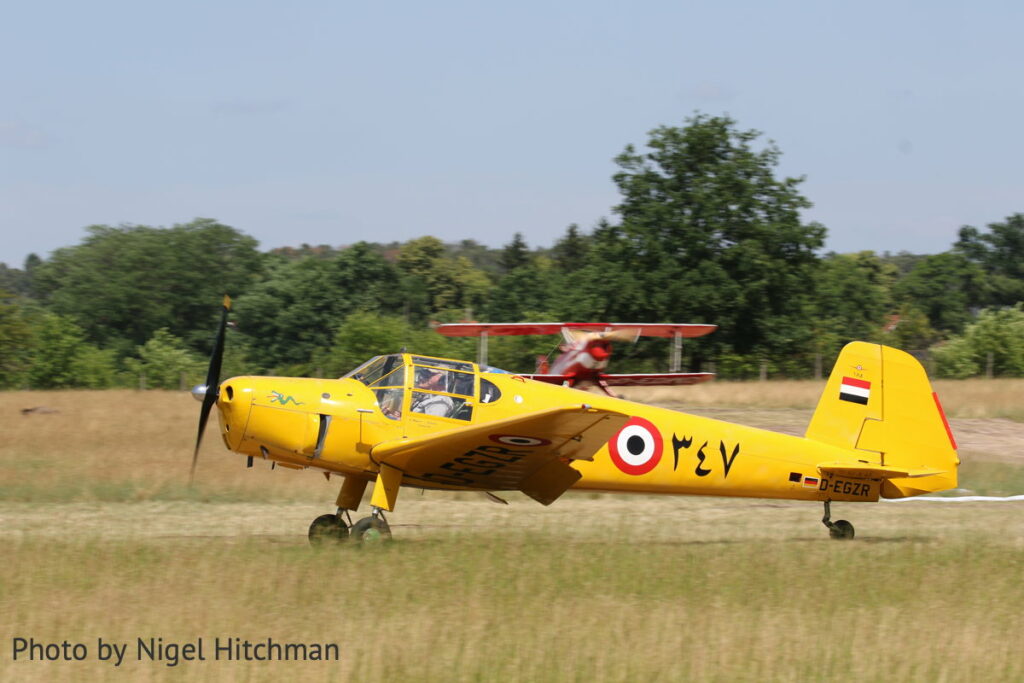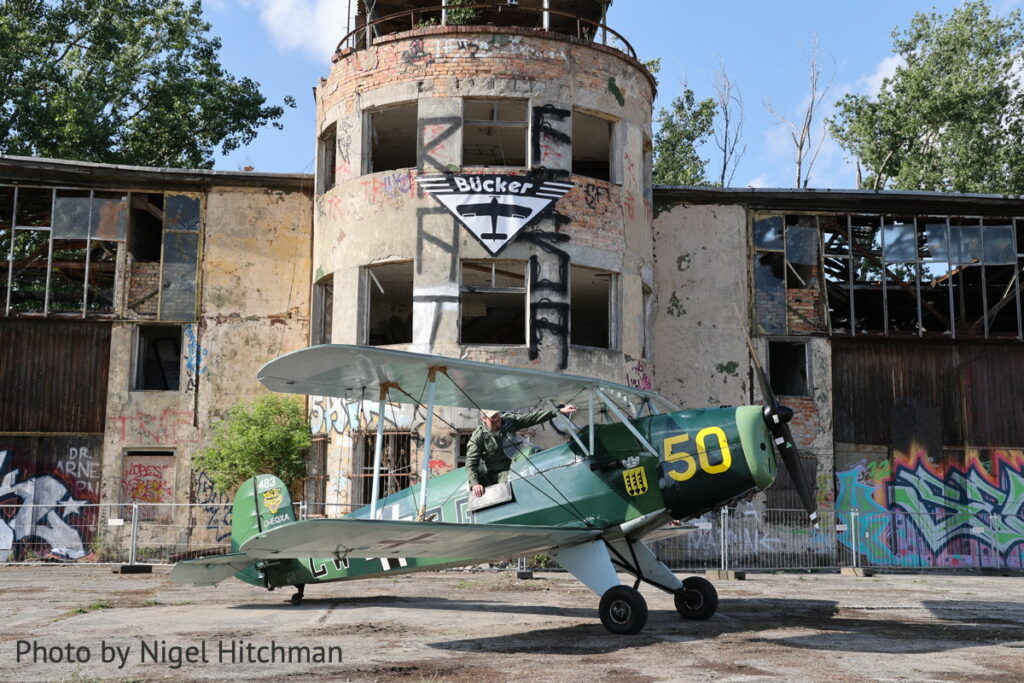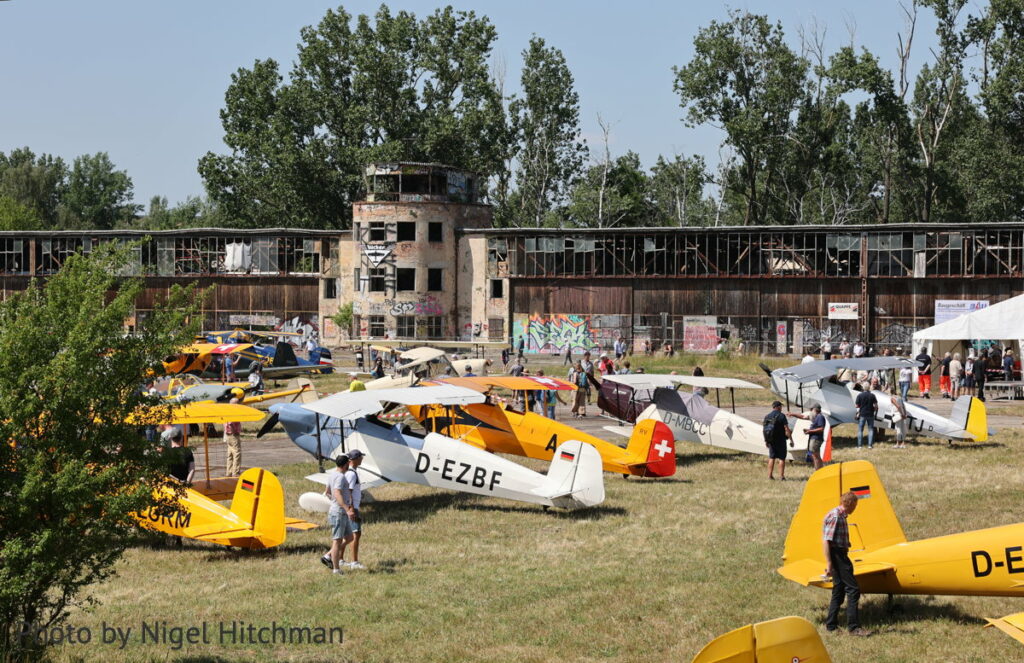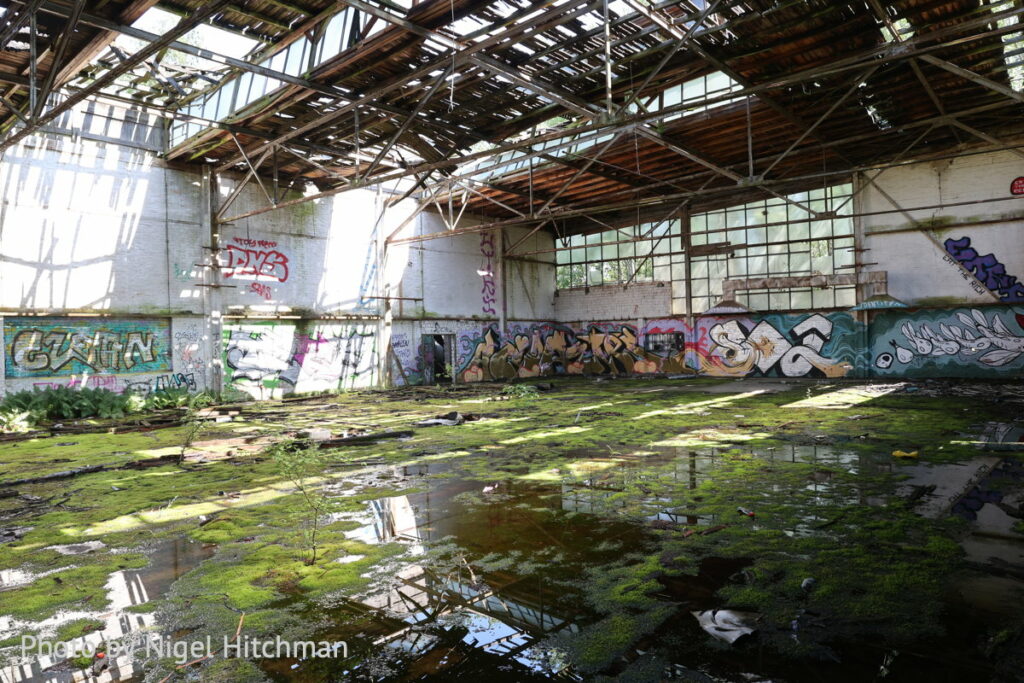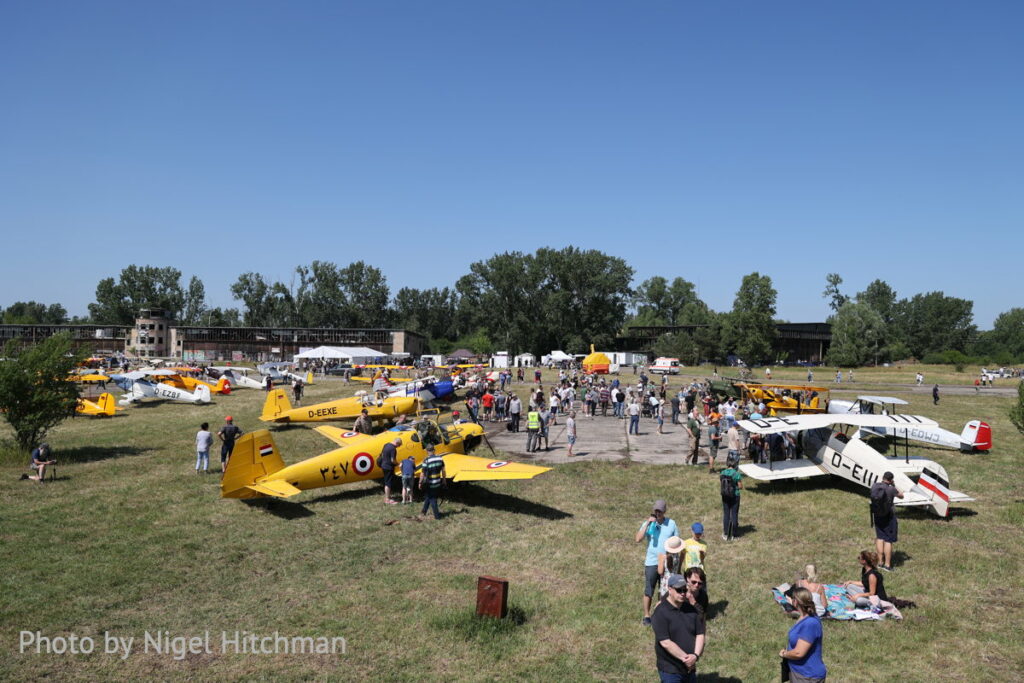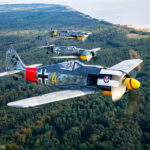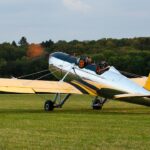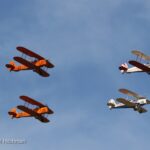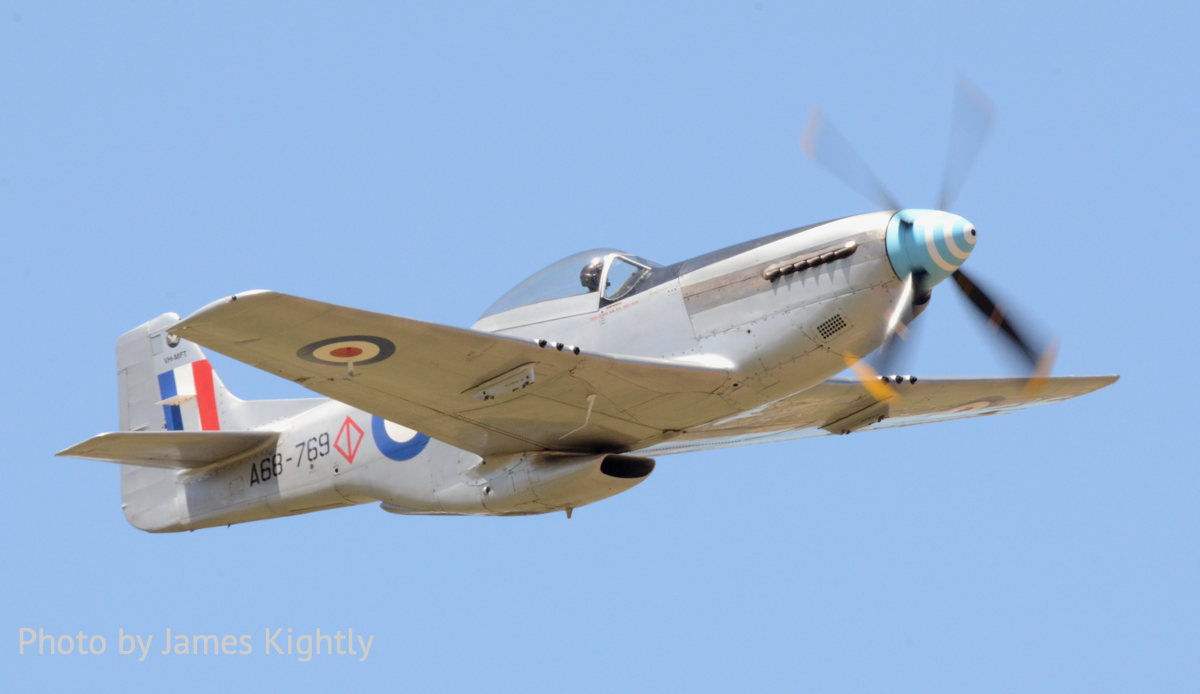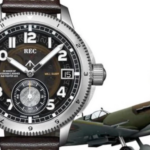By Nigel Hitchman
On June 24-25, there was a great Bücker Fly-in at the original factory airfield at Rangsdorf, just south of Berlin. It was organized by the Friends of the Bücker Museum, following previous one-off events. Rangsdorf was, of course, the factory airfield for the Bücker-Flugzeugbau GmbH, noted as making several of the world’s most highly regarded military aerobatic and training biplanes in the 1930s.
Over 50 aircraft made the pilgrimage to the original factory airfield. The majority were members of the Bücker family, as well as a number of guest types with significant connections. The greatest distance traveled to attend by aircraft crews was (we believe) Mark Turner and Simon Wilson in CASA 1.131 Jungmann G-RETA, along with Mark Jordan in the Heliopolis Gomhouria (a license-built Bu 181 Bestmann) G-TPWX, and closely followed by Pete Cunliffe in CASA 1.131 Jungmann G-CDRU – all from England. There was one Spanish-registered Jungmann EC-DKX, but we understand it is actually based in Germany.
While the original Bücker factory was here from 1935 to 1945, we believe only two of the Jungmeisters present were built here (registered D-EQOA and D-EIII), the rest that flew in were built elsewhere by various other factories under license in Switzerland, Spain, and in modern times in Poland, the Czech Republic, and Germany. A few other pre-1945 German vintage aircraft were invited, including a Klemm 35, four Focke-Wulf FW44 Steiglitz trainers, and one SAAB Safir, the latter type another design of Anders J Anderson, the designer of all the Bücker aircraft.
A good number came from Switzerland and Austria too, joining the many German-based examples. Non aircraft personal attendees came from a lot further, with several making the pilgrimage from the USA as well as many from all around Europe.
THE BÜCKER STORY
Carl Clemens Bücker was born in 1895 and was a German Navy pilot in W.W.I. He eventually became a test pilot working with Ernst Heinkel. After WWI, Bücker became a test pilot for the Swedish Navy and proposed the Swedes use the Heinkel Brandenburg W29 Hansa, which was imported in kit form. Bücker, with the help of Heinkel, then formed Svensko Aero AB in 1922 (which later became the famous SAAB) and they assembled the Hansa aircraft. Bücker was the technical director of the organization and oversaw the design of several aircraft for the Swedish military between 1927 and 1932, but in 1932 the company went bankrupt. Bücker returned to Germany, taking with him his Swedish chief designer Anders J Anderson, and the plans he had drawn up for a new lightweight single-engine biplane.
On 3 October 1933, Bücker Flugzeugbau GmbH was formed at a temporary location at the airfield of Johannisthal, close to Berlin, and their first aircraft, the Bu 131A Jungmann was flown on 27 April 1934. When the test flights were successfully completed, a new factory was built at Rangsdorf which opened in late 1935. The Jungmeister was developed in 1935 and both became very popular for civil and military sales.
Several unsuccessful designs followed before in 1939 the Bücker Bu 181 Bestmann was flown which again was a great success, with mass production of the Bestmann as the standard German Luftwaffe trainer starting in 1940, and the production of the Jungmeister and Jungmann then ceased at Rangsdorf. Bestmann production continued throughout the rest of W.W.II along with component manufacture for other aircraft including Junkers Ju 87 Stuka wings.
RANGSDORF THEN & NOW
After 1945 the airfield was used as a maintenance base by the Russians, latterly on Mil Mi-8 helicopters, until moving out in 1994. At that time, the original Bücker factory infrastructure was still complete, with some buildings added by the Russians, but it seems to have been left to go derelict since all of the remaining hangars were in very poor condition.
The built-up area of the airfield is being re-developed for housing, with, apparently, restoration of original buildings with housing built inside, rather than demolishing the original infrastructure. The area where the flying field was, including the temporary runway used for the event, will stay as grassland although with landscaping. Details of the project are HERE (in German only).
Rangsdorf has another claim to fame. On July 20, 1944 Claus von Stauffenberg and Werner von Haeften took off from Rangsdorf to fly to Ketrzyn (Rastenburg) to attend a meeting at Hitler’s Wolfsschanze, the Wolf’s Lair. There, Stauffenburg attempted to assassinate the Führer, a plot that unfortunately failed.
With the redevelopment imminent, but thankfully with the support of the development company, the area in front of the flight test hangar was used for parking on grass between some of the Russian concrete helicopter pads. A runway was cleared, cut, and marked out on where the old airfield was. While it wasn’t great, it was usable. Aircraft could be taxied off towards the parking area, but then had to be shut down and pulled or pushed into the area, as the condition of the ground was unfortunately very poor. A previous smaller event had been held in 2005, and that was the last time an aircraft had landed on site.
This will probably be the last time that a fly-in can be held here at the original factory airfield. There was some hope that perhaps when the development is complete, they will be able to make another temporary runway on the old grass airfield to have another fly-in, but for the moment that is just a dream. In the meantime, we would like to compliment the organizers for getting all the permissions required, and putting on this very successful event.







